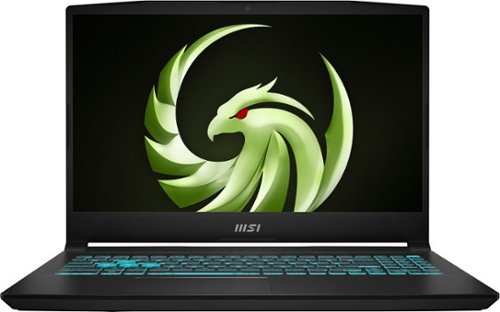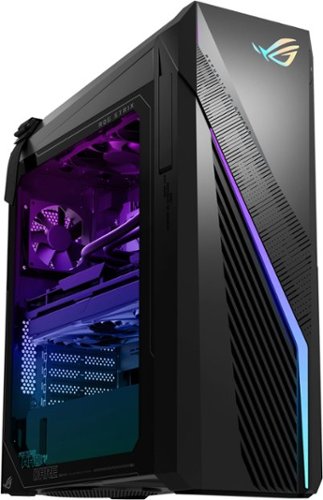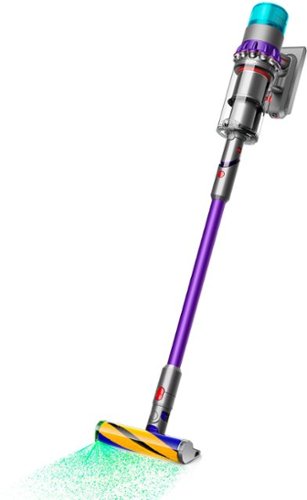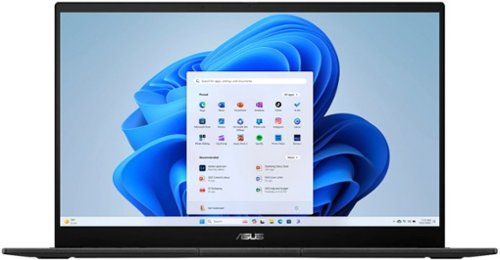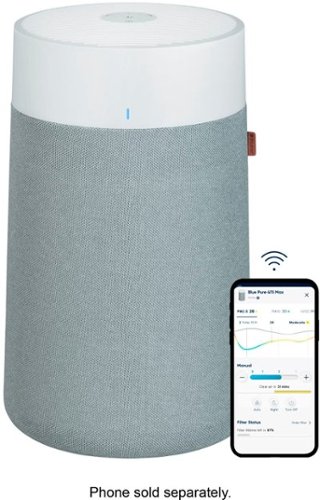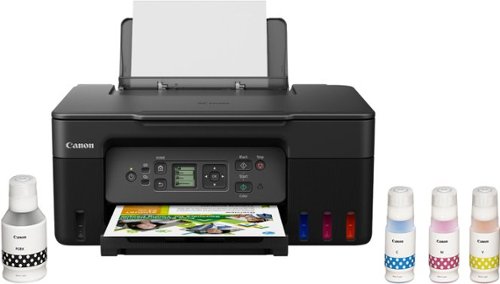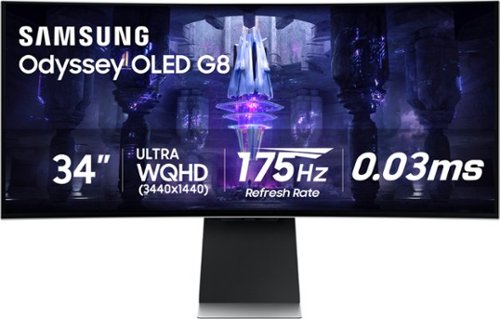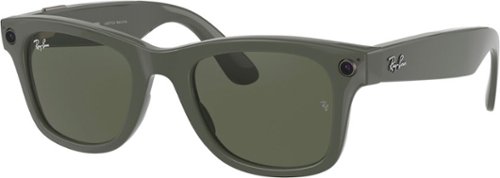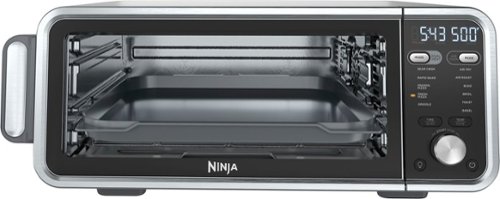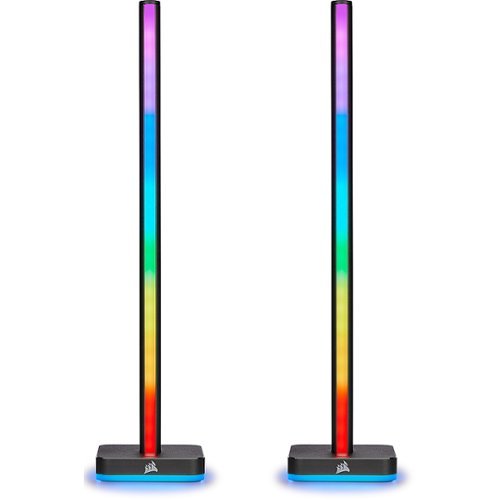Batlacit's stats
- Review count250
- Helpfulness votes929
- First reviewFebruary 13, 2016
- Last reviewJanuary 6, 2026
- Featured reviews0
- Average rating4.5
Reviews comments
- Review comment count0
- Helpfulness votes0
- First review commentNone
- Last review commentNone
- Featured review comments0
Questions
- Question count0
- Helpfulness votes0
- First questionNone
- Last questionNone
- Featured questions0
- Answer count55
- Helpfulness votes100
- First answerSeptember 21, 2016
- Last answerJanuary 21, 2022
- Featured answers0
- Best answers11
Ambush at the peak-point, overlooking the enemy and about to march strongly, Bravo 15 is ready to ignite the gaming world. Combining the latest AMD Ryzen 7735HS processor and AMD Radeon RX 6550M graphics together, Bravo 15 satisfies the gamer's imagination in gaming. With the MSI exclusive thermal solution - Cooler Boost 5, empower the full performance of CPU and GPU. Also the 144Hz gaming display provides sharp and smooth visuals so gamers never miss a beat. Take advantage of Bravo 15 and soar like thunderbird in the game battlefield!
Customer Rating

5
Affordable, Chunky Gaming
on September 3, 2023
Posted by: Batlacit
The Bravo 15 isn't a laptop that sets out to do everything. MSI's engineers were clearly on a mission when they designed this: produce a gaming laptop that does everything it needs to while still being broadly affordable. And, in my opinion, they've succeeded on that. It's not without its warts or downsides, but as cheap gaming rigs go the value proposition here is hard to beat.
First up: the overall build. Over the last few years we've seen more and more gaming laptops being released in ultralight form factors, with even some of the larger desktop replacement units thinning out by taking advantage of new vapor chamber cooling layouts. The Bravo goes a different way. it's a chunky laptop with tons of internal volume for air circulation and a heavy metal frame holding everything together. It does offer a solid chassis for typing, room for a full sized ethernet jack, and decent cooling performance, but at the cost of portability. Also worth considering is that pretty much all the casing is made of plastic - I do have some concerns that the ventilated base plate in particular is a weak spot (particularly if it were pressed up against anything sharp. On the plus side though the material doesn't pick up fingerprints, hides dust fairly well, and doesn't transfer heat nearly as much as laptops with metal cases when it's sitting on your legs. Overall so long as you're willing to invest in an appropriately sized and padded case for when the machine isn't living on your desk, I think it'll work fine for most users.
As far as performance goes, the laptop does quite well for itself in both benchmarks and real world gaming tests. As 3D Mark shows there's a LOT of CPU power in here, and while the GPU is less impressive it's still quite capable of handling most modern titles at 1080 resolutions (even though some may require turning down the settings a bit. And they've put a very good panel on the laptop as well, so you've got sharp lines, minimal ghosting, and decently bright colors. Performance out of the box is often only half the story with systems like this though: just as important is how much room they give you to improve it over time. And here the Bravo does better than most. Since it's not being engineered for thinness it's not doing what a lot of laptops are these days and splitting system memory between soldered and socketed - it's got two socketed SODIMMs meaning you can cram up to 64gb of RAM in should you feel inclined as well as giving it some extra high speed storage. Only downside is that it doesn't have a thunderbolt port, so you can't easily bump up the specs with an eGPU.
As far as incidentals go - there's not too much to say. There's certainly a bit more bloatware included than I'd like (particularly the "gaming" version of Norton) but that's more or less to be expected when dealing with a budget laptop of any sort, and easily stripped out. The keyboard is pleasant to type on, well lit, and does include a small numeric keypad. The placement of the FN modifier key is a little awkward on the right side as it forces you to use two hands for the most common keyboard shortcuts, but otherwise has no issues. There are also a few neat tricks provided by MSI and SteelSeries, like a function to use one or more bluetooth speakers to set yourself up a portable surround sound solution. And the WiFI 6E adapter provided appears to be both fast and stable. Only downside is the battery. With how much weight and room there is to play with here I kind of expected the laptop to be able to work all day on a charge when handling non-gaming tasks. But in practice, it can do about half that. So you might want to keep the AC adapter close to hand.
All in all, I give the Bravo 15 high marks for what it is. I see it as the ideal gaming rig for a student or an only occasional traveler.
I would recommend this to a friend!

Annihilate your competition with this ASUS ROG gaming desktop. The Intel Core i7 processor and 16GB of RAM deliver rapid performance during fast-paced action, while the 1TB SSD provide plenty of storage for large files and downloads. This Bluetooth-enabled ASUS ROG gaming computer features an NVIDIA GeForce RTX 3070 graphics card for tear-free rendering of 4K games.
Customer Rating

5
Solid prebuilt with some room to grow
on July 7, 2023
Posted by: Batlacit
Gamers have always had a bit of a contentious relationship with pre-built desktops. A lot of manufacturers have a bad habit of building for spec sheets rather than sensible part selection which can result crippling bottlenecks, limited expansion options, or something that's ludicrously underpowered. ASUS manages to avoid a lot of the common pitfalls in this desktop, leveraging their significant experience producing parts for the enthusiast market to produce a gaming desktop that stands well above typical prebuilt desktops but, sadly, does come with its own quirks that need to be dealt with.
First, let's talk about the case. It's a fairly typical "gamer" case, albeit in a thinner form factor than most are used to seeing. And I have to say that it does check most of the boxes for what your typical gamer is looking for. It's striking, has plenty of programmable RGB accents, a built in headphone hook, and a gorgeous tempered glass panel showing off the internals. It also includes a two-part carrying handle (an adjustable strap at the back and a rigid handhold under the chin) to make it easy to move around to LAN parties or dorm rooms. But it is also, unfortunately, the weakest part of the system by far. While it's definitely a massive improvement on some of the previous ROG case designs I've seen, ventilation is still very much hit or miss here. As far as I can tell it's using a negative pressure layout, with two big 120mm fans in the ceiling serving as the exhaust and a single 80mm fan in the rear pulling air in. None of these intakes are filtered, and there doesn't seem to be an easy way to pop off the panel at the top for cleaning. Meanwhile the power supply is given a dedicated intake and exhaust, which I'd normally applaud if not for the fact that the intake sits so close to the ground that it's almost completely choked off (and probably just wouldn't work at all on carpet.) When I first looked at it, I thought it would probably be intolerably noisy given that smaller fans usually need to run at speeds high enough to produce an audible whine to do anything. I'm surprised to say, though, that it's actually pretty quiet while running. Case temps do get quite hot though under both synthetic and real life workloads, and results showed that even with the water cooler the CPU was running into its thermal limit after just a few minutes. Finally, it's missing a lot of small quality of life features you'll often see on enthusiast hardware like thumbscrews to secure body panels, extra space for cable routing/management, or mounting trays for HDDs or SATA SSDs (though there do appear to be brackets for them in a few places.) All of this combined makes me fairly confident that a case replacement is likely in the machine's future if I want to do any significant upgrades.
Moving on though, things start to look a lot better. As mentioned, ASUS has a history with enthusiast tier hardware. And they've used some of it to build out this machine. You get an unlocked i7, a very decent upper-mid tier ASUS motherboard, an enthusiast tier dual-fan 3070, and a fully modular power supply with 750 watts and a gold efficiency rating. The power supply and CPU in particular are easy to overlook, but worth a lot in my opinion. I can count on one hand the number of off the shelf desktops that have come with a halfway decent power supply, let alone a modular one. And even if you don't plan to overclock the system, just the fact that it's rated for it means it's a step above the standard chips in terms of manufacturing quality. These two factors mean that you can likely expect a small but significant improvement to system stability and the useful life of the machine, and are very much worth spending a little extra to get.
So, now that we've covered build quality, how does it actually perform?
Overall, very well. It does struggle somewhat in synthetic loads - mostly I believe because of the cooling issues inherent to this case design. But you'd be hard pressed to notice this in real-world use. Cyberpunk 2077 with the settings cranked all the way up and Raytracing set to overdrive easily managed 60+ FPS at 1080p, even during longer gameplay sessions. Temperatures definitely were in the high range, but never got too concerning or forced the system to throttle back enough to significantly impair gaming performance. And, I'll admit, there are a lot of gamers I know (myself included) who might get excited at the prospect of spending a little extra time and money to make some improvements and unlock the full potential of this hardware. With a little care, this could easily serve as your primary gaming machine for at least the next five years or so.
Overall despite the issues I have with cooling performance and the case design, this is a pretty easy desktop for me to recommend. If you want to just set it on your (elevated, hopefully very smooth) desk and run it as is for the next five years, you can. And if you want to rip out the parts and rebuild it into a finely tuned beast of a custom gaming rig, you can. ASUS has delivered a solid foundation for your gaming experience here, which in my opinion would be a great starter PC for someone looking to ease themselves into the world of enthusiast hardware and what it can offer you.
I would recommend this to a friend!


The Dyson Gen5detect is the most powerful HEPA cordless vacuum.~ It has HEPA filtration for our deepest, most hygienic clean. It's engineered with the power, intelligence, versatility, and run time for a cleaner, healthier home. It intelligently optimizes suction power based on floor type and debris picked up.~ The LCD screen indicates when to keep cleaning an area and when to move on. The Fluffy Optic cleaner head reveals invisible dust on hard floors. The de-tangling Digital Motorbar cleaner head deep cleans carpets and hard floors without tangles. Its versatile cordless format transforms into a handheld vacuum with one click so you can clean up high, down low, and everywhere in between. The wand detaches to reveal a ready-to-go tool for continuous cleaning. Comes with a 2-year warranty and lifetime Dyson support.
Customer Rating

4
It's good, but I think Dyson can still do better.
on June 11, 2023
Posted by: Batlacit
This is the second Dyson vacuum I owned. The first was one of their big, intimidating upright vacuums that took up tons of space but made up for it with raw sanitizing power. As such I was eager to try out the Gen5 Detect to see if it could serve as a worthy and more space-conscious replacement. And while I’ve been overall very impressed by its performance so far… I sadly have come to the conclusion that it may be more of a supplement.
To start, I’d like to highlight that there are a lot of things that this vacuum did right. The first thing is that it comes with just about everything you might want or need standard, rather than requiring you to go out and look for expensive accessories after the fact. And as you’d expect it offers a ton of suction power and very good cleaning performance. The standout feature here is the “fuzzy optic” brush cleaning head meant for solid floors. A green light source scattered in a wide fan in front of the cleaning area causes every speck of dust, stray dog hair, or scuff on the floorboards to immediately fluoresce so that you can identify which areas need the most attention as you work, which is supplemented by a real time display on the back showing you how much material the vacuum is picking up as you go and how big most of it is. I’ll admit that I’m not sure getting a final tally of the number of dust particles removed is necessarily something I NEED to know, but it does add to the cool factor of the tech. Other features such as the hair-removal combs for the carpet cleaning head or the interesting corkscrew design for the upholstery head aren’t quite as flashy, but they do the job as well. And, as I’ve come to expect from Dyson, there’s a lot of attention shown to making the unit easy to maintain as well. Every time you open the dust bin a set of seals scrapes down the permanent metal filter, helping to clear it out and making sure none of the crud you pick up works its way back into the rest of the machine. The main HEPA filter twists off and can be cleaned in the sink. And everything with moving parts that need to be maintained is designed with toolless maintenance in mind, making it quick and easy clean up after you’re done or swap in spares when the time comes to replace parts.
As for the actual user experience, I was very satisfied. The cleaning heads aren’t quite big enough that I’d want to be vacuuming an entire house with them, but they’re great for spot cleaning after a project or quickly touching up a bedroom. And the motor, despite its bulk, is shockingly quiet. By default it operates on an auto mode, where it adjusts the motor speed to how much dust it picks up. In the past I’ve found that these kinds of things are usually very hit or miss, with it often making more sense to just turn them up to full and leave them here, but I didn’t have any issues with the Dyson. It was responsive any time it found a big pile of dust or stubborn clump of dog hair, and apart from that it kept things dialed down so that I could enjoy watching the bin fill up without feeling bad about scaring the dog.
Unfortunately, as much as I liked my time with the vacuum, I also kept running into little issues that did dampen my enthusiasm somewhat. The first one was encountered right as I opened the box and found popped seams on two of the cleaning heads. It wasn’t particularly hard to fix – a little pressure along the open seams was all that it took to get the plastic parts to seal back together and there haven’t been issues since – but it was very surprising to see that it made it through quality control on a product from a company that’s made a name for itself on paying attention to small details.
I never ran into any similar issues with build quality again, but I did find a lot of things about the design that seemed a little… off. The weight distribution, for example. The motor and battery unit are very heavy, and the attachments do not do a good job of taking up any of that weight as you use them. This can make the thing a little ungainly to maneuver, which made getting into ceiling corners something of an adventure. Apparently with this model they also moved the power button from a trigger on the grip to a button placed on the rear of the unit. While I can see how a trigger wouldn’t feel great to use here, I don’t think that a button that more or less requires a second hand to reach is that much better. Often I do find myself needing both hands to steady the vacuum, particularly with the wand attached, so the presence of a thumb switch or some other mechanism to allow for one-handed operation would have gone a long way towards making it feel less awkward. I was also rather disappointed to see that there was little if any attention being paid to how you store the collection of accessories that come included. On my upright vacuum, everything either had a storage solution or was designed to retract into the body of the unit itself so that you never had to worry about losing something. Here, it feels like an afterthought. The charging stand has two sockets for accessories, but there simply isn’t enough space to make use of them. Just about everything is wide enough that if you insert it into one of the sockets, you block access to the other. The only exception to this is the main wand, which you’d normally probably be storing attached to the vacuum anyway. So everything ended up scattered around the living room for a day or so before being shoved unceremoniously into a bag stowed in the closet. Finally, the carpet cleaning brush was constantly getting bogged down when I tried to run it until I was able to dial in the right clearance using a stiff slider on the front of the cleaning head, where you basically had to flip the thing upside down to adjust it. If you live in a home with throw rugs or multiple thicknesses of carpet, it seems to me like this would be an annoying extra step to go through every time you wanted to move on to another room.
Ultimately, I don’t think any of these issues are necessarily deal breakers. Most other vacuums I’ve used have had similar problems, if I’m being honest. But when you’re paying extra for a brand like Dyson, which is supposedly offering an elevated experience, it feels like it’s not unreasonable to expect more. It’s still a great option for small spaces or as a supplement to an upright or robot vacuums to do detail work, but in my opinion it’s still something of a lesser option to Dyson’s upright offerings.
I would recommend this to a friend!


The versatile and powerful ASUS Pro 15 OLED is an Intel certified laptop that~s designed for those who want to do more. Its 13th Gen Intel Core processor deliver outstanding multitasking and creative power, with ASUS IceCool Plus thermal technology for maximum performance. The 2.8K 120 Hz OLED NanoEdge Dolby Vision has a cinema-grade 100% DCI-P3 gamut, and is PANTONE Validated with DisplayHDR True Black 500 certification. It~s also T~V Rheinland-certified for eye care. The Harman Kardon-certified quad-speaker Dolby Atmos audio system adds to the cinematic experience with ultra-realistic multi-dimensional sound. For fast face login there~s an FHD camera, and a color sensor allows automatic control of screen brightness and color temperature.
Customer Rating

5
Sleek & Powerful Portable Workstation
on May 22, 2023
Posted by: Batlacit
Not that long ago, opting for a thin laptop meant accepting steep compromises in terms of performance. Recent breakthroughs in power efficiency and thermal management have been working to counter that over the last few generations - and ASUS's latest Q series laptops now prove that you can have it all. The Q540V is a powerful computing platform with almost everything a creative professional might want and still fit within a purse or backpack with ample room to spare.
First let's talk about the standout feature of this laptop: the screen. The OLED 16:10 panel on this laptop sits between QHD and UHD resolution, but is much closer to the QHD (2K). And that still verges on overkill for a panel of this size, but in the best possible way. Images are impeccably sharp, and thanks to the OLED tech it delivers deep blacks and vibrant colors with equal aplomb. It's color calibrated and Pantone validated out of the box, a huge plus if you're anyone doing professional design work, and doesn't draw nearly as much power as a comparable LCD might. Comparing it against another high end LCD from ASUS and the screen on a Macbook Pro, both of which were also professionally calibrated, I found that the OLED panel here was the clear winner in both dim and brightly lit environments, with photos in particular having a lifelike quality that LCDs just can't match.
Almost as impressive is the hardware driving the display. The 13th generation Core i9 chip excelled at both rendering and number crunching in my tests. And while the RTX3050 providing graphics isn't going to be at the top of any benchmark lists, it's more than enough to keep the full Adobe creative suite running smoothly. Heavy users may find themselves somewhat limited by having only 16gb of RAM available - though this can be upgraded to a degree (more of that later.) It's also capable of handling some moderate gaming - though it will likely struggle with some of the newest titles or anything making use of hardware raytracing. As is to be expected all this does lead to some compromises with portability though. Even optimizing for battery life, the most I'd expect to be able to get out of this would be four hours of use between charges. And while it's certainly not a heavy laptop, it's also quite far from being a featherweight.
Moving on to overall build quality, I'd rate it as good but not quite perfect. There's definitely some flex to the casing and the metal surfaces are fingerprint magnets. But the screen appears to be very well protected, and the chassis is certainly stiff enough for me to feel safe carrying it around in a case. The keyboard is pleasantly tactile and includes a small numeric keypad which I'll admit does take some getting used to, but after a couple days of practice I found it to be a very nice addition. The power button has an integrated fingerprint reader, the webcam has an integrated privacy filter, and the harman/kardon speakers are as good as one can expect from something in this form factor. The microphone array, which seems to include one placed on the back of the screen unless I'm mistaken, is also quite capable and comes with AI noise cancellation (though the tech does still struggle with some of the domestic noises that come with remote work.)
This brings me to the final area of discussion: upgradeability. I feel a little mixed here because, on the one hand, it's getting increasingly rare to find any slim laptops that will allow you to open up the case and swap out parts without the use of a heat gun. You don't have to deal with that here. The bottom panel is held on by a combination of torx head screws and clips. It isn't the easiest to get off - I still needed to employ some shims to get some of the clips to cleanly release without breaking - but it came off cleanly enough. Once you're inside the only parts that are immediately accessible is an m.2 slot for storage and the wifi adapter. If you want to increase RAM or swap out the included 1tb drive for something bigger or faster, you'll need to remove an additional metal support structure and weirdly arranged shroud to get access. And as is becoming increasingly common there's also only one upgradeable DIMM - with the remaining 8GBs of RAM being soldered to the motherboard, so for now at least you're capped at 24GB of RAM unless someone starts offering higher capacity DDR5 SODIMMs. Given how much memory design apps can consume I really do wish they'd just solder all 16 gigs of the included memory straight to the motherboard and leave the socket empty for future expansion - but for now I'll certainly take this over not being able to upgrade at all.
All in all, I have no issues recommending this laptop to any travelling professionals, freelance graphic designers, or someone looking for a stealth gaming PC.
I would recommend this to a friend!

Blue Pure 411i Max HEPASilent smart air purifier quickly cleans 219 sq. ft small rooms in about 12.5 min, up to 526 sq. ft space in 30 min, or 1,052 sq.ft in 1 hour on high. This air purifier has a Clean Air Delivery Rate (CADR) of 141 for fine smoke particles, dust and pollen.
Customer Rating

5
Minimalistic looks hide all the bells and whistles
on May 16, 2023
Posted by: Batlacit
Air purifiers, as a rule, don’t aim to stand out. And Blue’s design teams appears to have taken this to heart with the Pure 411i Max. With its minimalist looks and muted color palate it would be very easy for someone seeing it in your home to mistake it for a large speaker or subwoofer, assuming they noticed it at all. Beneath that clean exterior though is a surprisingly sophisticated system for keeping your air clean and your allergies in check, albeit with a little room left for future improvements.
There really isn’t too much I can say about the appearance of the unit that isn’t clear just from looking at pictures. The design is very modern, embracing Swedish minimalism and modernity. One thing that did catch me off guard when unpacking it though is that unlike the last Blue filter I owned, which had the filter unit itself sitting behind a plastic cage, the 411i Max moves the filter to the outside. On the one hand this does mean there’s more square footage available for the filter, which seems like it should help improve performance somewhat. On the other hand, it does mean that the pleated HEPA filter is now more or less unprotected from any pets, small children, or wayward robotic appliances that might happen to run into it. In my case I’m placing it in a more or less isolated alcove behind my dog’s crate, as he's the main source of dust and allergens I’m looking to remove anyway, so I’m not exceptionally concerned about anything hitting it. If you have a home where anything sitting out on the floor is likely to be run into by something or someone, you may want to do the same.
Once you’ve found a spot for it, getting it up and running is just a question of tapping the relevant icons on the top until you’ve got the fan set to the speed you want. In keeping with the overall look there are no tactile interfaces here to break up the clean lines or potentially trap dust, so keeping it clean is fairly easy. But the real functionality of this unit comes when you pair it to the Blue app on your phone and get it connected to your home’s WiFi. This unlocks the ability to do real time air quality monitoring, schedules, geofenced activation, and control the brightness of the LED used to indicate current air quality. While I can’t say any of these are truly essential features, they do offer a lot of opportunities to fine tune your usage to extend the lifespan of your filters and control noise. In my case, I got it set up so that every time I get within 15 minutes of my home the purifier ramps up the fan speed to max for as long as it takes to reach the highest level of air quality, then have it throttle back down to lower speeds when I’m actually at home. The result is that I rarely ever hear a peep out of the thing while I’m at home. Normally I’d probably be running it 24/7 at medium speed, at which point it does make enough noise to have its presence known, but this smarter approach means I don’t need to worry about leaving it to chug away at low speeds.
I found the app itself to be built along similar lines to the filter. There are options for you to name and control multiple smart purifiers if you have them, a map showing you real time updates on air quality (though, at least where I live, it doesn’t seem to shift much at all,) and a graph showing local particulate levels based on the air quality sensor within the purifier. There are also the obligatory links to help you order new filters (available with a subscription if you don’t want to think about it) and all the physical controls on the unit are replicated as well to allow remote control. One mark against it is that, at least so far, I haven’t found anything to indicate it can be connected to an existing smart home management system for centralized control, but it seems like this is a feature that could potentially be integrated if there proves to be enough demand for it from customers.
Ultimately, I would consider this to be somewhat a niche product for the simple fact that a smart air purifier isn’t really something anyone desperately needs in their day to day life. But it’s a niche product done very well, and its excesses do add real value here even if it’s mostly focused on alleviating minor annoyances and inconveniences. As such I have no issue recommending it to anyone who has a history of allergy problems but can’t stand to have a purifier running non-stop next to their bed while they’re trying to sleep.
I would recommend this to a friend!
Sharp 2.2 cu ft Stainless XL Family-Size Countertop Microwave, 1200 watts, Inverter Technology, Sensor Cook, LED Interior Lighting, Auto Cook Functions, Weight and Time Defrost.
Customer Rating

5
Excellent microwave for larger jobs
on May 7, 2023
Posted by: Batlacit
I've come to realize that a good microwave is kind of like a good window - if it's doing its job, you shouldn't be able to notice it's there. And this microwave from Sharp certainly lives up to that concept. It offers powerful, effective cooking in a highly unassuming package.
First thing I think you should be aware of if you're looking at this is that this is a very BIG microwave, easily large enough to fit a whole chicken inside. It will definitely take up a huge chunk of the countertop. It is not, however, a particularly heavy one. I feel like this is the kind of unit that's really optimized for in-wall mounting, as it was sliding everywhere on my counter any time I tried to open the door or push a button before I added some grippy rubber pads to the bottom of the feet.
Fortunately this was also the last problem I had with the microwave. The heating element is extremely powerful, and cooks food very evenly. The sensor cook can be a little on the aggressive side, particularly when reheating leftovers, but does a great job with popcorn and softening butter. The controls are responsive. It is dead silent when running. And it is very easy to clean up spills and splatters from the interior. In other words, it does everything you might want a microwave to do for you. Which, as someone writing a review, makes it a little hard to talk about. But when the biggest problem in my notes is that the rubber feet aren't sticky enough, that's got to be a sign that the engineers are doing something very right. To me this makes it ideal for families or other large households looking to quickly prep multiple large meals with a minimum of fuss.
I would recommend this to a friend!
Designed for home and home offices, the Canon PIXMA G3270 MegaTank All-in-One inkjet printer delivers high-quality, low-cost printing, and outstanding wireless connectivity in a compact size. Get serious print productivity with a high page yield of up to 6,000 Black / 7,700 Color pages per full ink bottle1 set and a low cost per print - MegaTank means Mega Savings. The PIXMA G3270 comes with a full set of ink, so you can print with confidence. The PIXMA G3270 is easy to set up and maintain and offers great media versatility to print on a variety of media types and sizes, including photo paper, envelopes, banners and more. Use Poster Artist Online to create professional-posters, banners and signage. Print both documents and photos on a variety of paper types using a hybrid ink system with pigment black for sharp black text and dye-based colors for vivid borderless2 photos up to 8.5~ x 11~. Produce crisp, colorful documents quickly and cost-effectively with fast print speeds and a high quality 4-color pigment-based ink system. Keep printing with a plain paper capacity of up to 100 sheets or 20 photo sheets (4~x6~). Easily connect and print through high-speed USB or wirelessly2 from computers or mobile devices. This comes with a 1-year limited warranty3 and is backed by Canon's Service and Support network.
Customer Rating

4
Capable, if somewhat basic economy printer
on May 1, 2023
Posted by: Batlacit
The G3270 is a capable printer for anyone looking to leave cartridges behind, but unfortunately does omit some of the features you might expect from an all-in-one device at this price point.
The setup process for the printer is very simple. The paper trays are all permanently affixed and simply slide and/or fold out, and there are only a few pieces of tape holding everything in place. There are only two major assembly steps: installing the print heads and loading the ink tanks. Both simply require you to drop the requisite parts into their corresponding slots. Everything is keyed so that there shouldn't be any risk of accidentally mixing up which one goes where, and gravity does all the work getting the ink out of the bottles so there's no mess to worry about if you're less than perfect. WiFi setup is handled via an app, making up for the somewhat basic control panel. All in all, you should be able to get up and running in just a few minutes (though it may take longer to fully prime the pumps responsible for delivering the ink.)
As far as printing goes, quality is quite good on both standard and photo paper (though the latter, as expected, makes a significant difference in terms of color quality and overal clarity.) Text is sharp and can be produced relatively quickly. And with tanks this big, you should be able to do plenty of large jobs without exhausting the supply. The scanner is also quite sharp and offers very high quality results. The top mounted paper tray also means it has no issues working with banner paper for larger displays, and its ability to print borderless media appears absolutely flawless.
This, however, is when some of the printer's less impressive attributes started to show. To start, it is mechanically quite noisy while operating. I don't know if the ink delivery system is adding to it or if there are just some loud stepper motors driving the print carriage, but it can be a bit distracting while it's going. I also found while testing the copier that the control panel is pretty non-user friendly. It is not adjustable at all and the tiny LCD screen used for feedback and settings is only really easily readable when viewed head on - which isn't likely to occur unless you're fairly short or you've placed the printer up unusually high. Finally, it doesn't have a lot of the features that I've started to just come to expect as standard for something that takes up this much space. There's no built in duplexer for dual-sided printer, no automatic document feeder for the scanner, and only a single paper tray. As such I'd say this is much better suited for occasional home use than an office setting.
No, I would not recommend this to a friend.

When you need relief on-the-go, Theragun mini delivers scientifically-proven percussive massage therapy in a compact, lightweight, ultra-portable design that fits right into your purse, gym bag or luggage. From long runs, to plane rides or a day on the golf course, Theragun mini goes wherever you do to relieve aches and pains, reduce stress and tension. Plus, access easy to-use routines in the Therabody app, so you can get the relief you need anytime, anywhere. Science-Backed Benefits: Quick Pain Relief, Ease Tension On-The-Go, Improve Recovery, Reduce Soreness, Find Calm & De-Stress Anywhere, Improve Sleep. HSA/FSA eligible purchase.
Customer Rating

5
Portable relief
on March 12, 2023
Posted by: Batlacit
As someone who has what could politely be called "less than ideal posture" at my job, discovering myofascial release massage guns was life changing. They are absolutely fantastic for working out knots, and I've heard are great for helping recover after intense outdoor activities as well. Unfortunately, if there's one problem with these devices it's that they tend to be quite large and heavy and as such I could never really bring myself to take them along on a hike or protracted bike ride. Which makes this thing a bit of a game changer.
I've spent about two weeks at this point bringing this thing around with me everywhere, and I have to say that having it immediately available has been great. It's not quite as easy to use or thorough as the larger devices, mostly owing to the fact that it doesn't have a grip design that makes it easy to reach awkward places in the middle or your back or hold it firmly in place so it doesn't shake its way free. But for most daily use it's fine, and being able to use it more often does seem to help. My legs in particular feel so much better since I started incorporating this into the start of major activity, and the app has been doing an admirable job in teaching me how to get the best results. I know, the app does at first seem like it would be superfluous as you can usually tell where knots are without help. But as it turns out a lot of the time muscle pain is actually caused by something going wrong elsewhere in the body that might not be immediately painful. And the app's massage programs are really good at guiding you through all the potential trouble points so that you hit the root cause as well as the areas with the worse symptoms. And the fact that this is a bit quieter than the full size massage gun does mean you attract a little less attention from bystanders.
There are a few areas that could still stand to be improved though. The biggest one is the carrying case. You get a fitted neoprene carrying case with the device that does a pretty good job protecting it from scuffs (the body is pretty solid, so I don't think it needs to do much more than that.) But fitted is the operative word here. It perfectly fits the gun and one attachment. It comes with three. Having a little more slack in the bottom so you could store all the parts with it without awkwardly stretching the case out would have been a great quality of life improvement. Also, as someone with multiple connected Theraguns, I'm really not that impressed with how the current version of the app handles switching between devices. While it'll let you join multiple devices to the app, it also requires you to select one as your "primary" device. As far as I can tell it only ever tries to connect to the primary device though, rather than just looking for both and going with whichever one happens to be turned on and in range.
Given that, this probably wouldn't be the Theragun I'd recommend for anyone with serious muscle pain that they plan to work on at home. As capable as it is, it is still a bit of a step down from the big ones. But as a supplement, or a primary device for anyone who's mostly just looking to address muscle pain from strenuous exercise like hikers or bikers, this is a fantastic device.
I would recommend this to a friend!
Get ready to experience mesmerizing gaming with Samsung's 175Hz QD-OLED screen. Enhanced with the Neo Quantum Processor, it delivers brighter whites, deeper blacks and near-infinite color contrast, for an intensely captivating view in QD-OLED. The fastest Odyssey yet moves at electrifying speed with a hair-raising 0.03ms GTG response time. Instantly access top streaming services via Gaming Hub and enjoy smooth play with Samsung~s advanced streaming technology. Additionally, your game room will be instantly upgraded with the Odyssey QD-OLED G8's super slim frame, premium metal finish and visually stunning Core Lighting+.
Customer Rating

5
A fantastic, if slightly quirky, product
on March 6, 2023
Posted by: Batlacit
After years of hearing about the potential advantages OLEDs could bring to PC monitors, I must admit it's a little odd having one sitting on my desk. Turns out the hype is real.
This is actually the second ultrawide curved monitor I've owned form Samsung. The first time one was delivered it came in a box roughly the size of a small coffin that had been stuffed with foam to protect the fragile LCD in shipping. So when this one arrived in a box that was positively svelte by comparison, it made an immediate impression. There is still tons of foam, of course, but the screen itself has been shrunk down to almost unreal thinness owing to the fact that it doesn't need a backlight. Pretty much all of the bulk seems to come from the mounting point for the stand, the ports, and integrated speakers. And, in a surprising bit of luxury, very little of it is plastic. The whole thing is wrapped in a sturdy milled aluminum case that not only looks great but also keeps the weight down to a minimum, making it very easy to get the whole thing set up and moved onto my desk. Honestly the worst part of the process was finding a place for the thing's rather bulky power brick where it wouldn't stand out too much.
Once the monitor was set up, it continued to impress. It comes out of the box set to gamer mode, which emphasizes response times and refresh rate. And while I can say that I have seen monitors that are a bit faster, none have managed to also deliver the same kind of rich color or almost overwhelming brightness while doing it. There really is no good way to convey just how good OLEDs are at color reproduction short of going to see one for yourself, particularly when it comes to watching anything with a lot of dark shades. Cyberpunk 2077's neon wasteland has never looked quite so eye-searingly good as it has on this monitor being driven by a 3080. And while currently OLED is very much a niche display offering, I suspect that once people start seeing just how good they can look it's going to become steadily more common on gaming rigs.
That said, there is certainly some quirkiness here that betrays just how early OLED gaming monitors really are in their development.
Some of these are fairly positive, if perhaps a bit unusual. One of the things that initially threw me for a loop when I unpacked it was the presence of small remote in the box. It turns out that this remote is intended for the included Smart TV features, something that I haven't seen being integrated into a dedicated display since the early aughts. It's not a bad thing, necessarily, but it's decidedly odd trying to use these given that the aspect ratio doesn't match that of your standard TV set. My first thought was that maybe they were using a modified control board from an OLED TV to avoid having to create a whole new part... but then I saw the ports. Rather than the usual mix of HDMI and DP ports you get on most gaming monitors this one only has a single mini-DP port and three USB-C ports. My first thought on opening the box was that maybe the screen was just too thin to fit full sized ports, but after getting it out and looking at it this doesn't seem to be the case. Fortunately Samsung does include a mini-DP to DP cable in the box, so I didn't have to rush out to buy any new cables, but it was a bit annoying that the expensive extra-long DP cable I'd purchased previously to allow me to move my tower somewhere I could more easily work on it without taking apart the entire desk couldn't be used without an adapter. Though I suppose in a few years it's possible that this will be the new standard and the G8 will be remembered as an early trendsetter, right now this is a bit of an annoyance.
Ultimately though, I don't think most should consider these to be a dealbreaker for this fantastic gaming monitor.
I would recommend this to a friend!
CT2K16G4SFRA32A is the Crucial 32GB kit consisting of (2) 16GB laptop modules that operate at the speed of 3200MT/s and has a CAS Latency of 22. It is a SODIMM and conforms to the industry standard DDR4 SODIMM layout of 260 pins. It is compatible with systems that can take DDR4-3200 SODIMM memory.
Customer Rating

5
Effective RAM upgrade kit
on March 1, 2023
Posted by: Batlacit
This is good RAM.
It's honestly a little hard to say more than that, particularly when it's for a mobile device. Unlike with desktop memory, there really aren't a ton of options available for laptop SODIMMs in regards to how you configure it or what kind of performance improvements you can make. But this does check all the boxes. The CAS Latency of 22 is decently low for mobile memory. There are a few DDR4 kits that can manage a CL of 20, but the performance gains you get from that are pretty negligible. The speed is great. And it runs stable. In my case I was swapping it into a gaming laptop that I often use for 3D work, since the 16gb it shipped with was starting to bog down a little on more complex jobs. The new memory performs almost exactly the same in day to day tasks (within .6% on most benchmarks) and did a great job of clearing that bottleneck I was encountering on the more complex tasks. System stability is great, it passed a memtest with flying colors, and power consumption remains more or less the same.
So... yeah. It's good RAM from a reputable supplier. It's a great choice for everyday use in high powered machines.
I would recommend this to a friend!
Batlacit's Review Comments
Batlacit has not submitted comments on any reviews.
Batlacit's Questions
Batlacit has not submitted any questions.
From the rock revolution of the ~60s, to the art scene of the ~80s, to the forefront of hip-hop culture ~ Wayfarer has become an enduring icon across endlessly shifting horizons. Now the journey continues with the latest in wearable tech. Ray-Ban Stories Wayfarer integrates the best of your phone with the timeless frame, bringing you a new way to capture and share your adventures.
I'm unable to find a phone compatibility list, does anyone know if this works with android phones too?
Yes, it works just fine on Android. No idea why they don't advertise it on the box.
3 years, 11 months ago
by
Batlacit
This Element 27" frameless gaming monitor provides everything you need for premium gameplay or everyday tasks. This 1440P resolution monitor is equipped with FreeSync Technology for avoiding tearing and reducing stuttering. With easy set-up for multiple screens, you're able to expand your view and get more done. The 16:9 widescreen resolution partnered with a 1ms response time and 165hz refresh rate allows a vivid, realistic picture so you can be immersed in your gaming world. Built-in speakers and a sleek, frameless screen enable the monitor to blend with your decor for a clean aesthetic.
Is this monitor good for an Xbox one s gaming? I'm new to monitors and this one would be my first one
The integrated audio is pretty bad even by monitor standards, but apart from that it should work fine for console gaming. It's not going to deliver an exceptional experience, but it should be able to beat most TVs as far as latency goes.
4 years ago
by
Batlacit
This Element 27" frameless gaming monitor provides everything you need for premium gameplay or everyday tasks. This 1440P resolution monitor is equipped with FreeSync Technology for avoiding tearing and reducing stuttering. With easy set-up for multiple screens, you're able to expand your view and get more done. The 16:9 widescreen resolution partnered with a 1ms response time and 165hz refresh rate allows a vivid, realistic picture so you can be immersed in your gaming world. Built-in speakers and a sleek, frameless screen enable the monitor to blend with your decor for a clean aesthetic.
Is this a good monitor for competitive gaming on the ps5 ???
This Element 27" frameless gaming monitor provides everything you need for premium gameplay or everyday tasks. This 1440P resolution monitor is equipped with FreeSync Technology for avoiding tearing and reducing stuttering. With easy set-up for multiple screens, you're able to expand your view and get more done. The 16:9 widescreen resolution partnered with a 1ms response time and 165hz refresh rate allows a vivid, realistic picture so you can be immersed in your gaming world. Built-in speakers and a sleek, frameless screen enable the monitor to blend with your decor for a clean aesthetic.
Does it have a hdmi?
Yes, it has two HDMI ports and does come with both an HDMI and DP cable.
4 years ago
by
Batlacit
This Element 27" frameless gaming monitor provides everything you need for premium gameplay or everyday tasks. This 1440P resolution monitor is equipped with FreeSync Technology for avoiding tearing and reducing stuttering. With easy set-up for multiple screens, you're able to expand your view and get more done. The 16:9 widescreen resolution partnered with a 1ms response time and 165hz refresh rate allows a vivid, realistic picture so you can be immersed in your gaming world. Built-in speakers and a sleek, frameless screen enable the monitor to blend with your decor for a clean aesthetic.
Does it have integrated speakers?
Yes. But they sound horrible and require you to go through two menu layers to change the volume. I wouldn't consider them as a selling point.
4 years ago
by
Batlacit
An industry defining 49~ 1000R curved screen, equipped with a cutting edge Quantum Matrix HDR2000 panel, 240hz refresh rate, G-Sync and FreeSync Premium Pro support, 1ms GTG response rates, and fully customizable Odyssey Infinity Core lighting.
DP 2.0?
No, it's still using 1.4. Getting DP 2.0 certified is turning out to be a lot trickier than it was initially expected, most are saying we probably wont' see them hitting the market until 2022.
4 years ago
by
Batlacit
An industry defining 49~ 1000R curved screen, equipped with a cutting edge Quantum Matrix HDR2000 panel, 240hz refresh rate, G-Sync and FreeSync Premium Pro support, 1ms GTG response rates, and fully customizable Odyssey Infinity Core lighting.
My new g9 arrived in the box for the old g9. Even though the box has a sticker that says "Neo G9 Odyssey" sticked on it, the box itself is for the old model. Does anyone else have the same issue? Why is that the case?
They're just using up the old boxes and foam. The shape and size of the product hasn't really changed, I don't think it's anything you need to worry about so long as the monitor itself has the right model number.
4 years ago
by
Batlacit
The Ninja Foodi Dual Heat Air Fry Oven gives you versatility in the kitchen with 11-in-1 functionality from Air Fry and Sear Crisp to Rapid Bake and Toast. With Dual Heat Technology, unlock up to 500~F cyclonic air and a directly heated SearPlate, which allow for fast cooking and restaurant-worthy results. Cook up your favorites and then flip the oven up and away to reclaim your counter space.
Can both trays be used at once?
Explore a new world of personalized home theater audio. The SRS-NS7 Wireless Neckband Speaker uses Sony~s 360 Spatial Sound Personalizer technology to envelop you in the rich audio of your favorite shows and movies, while being unobtrusive to others in your home.
Do these have 3.5mm jack or do they only connect via bluetooth?
They will only work with bluetooth or optical connections.
4 years, 2 months ago
by
Batlacit
Extend your PC~s RGB lighting with the CORSAIR iCUE LT100 Smart Lighting Towers Starter Kit, part of the iCUE Smart Lighting Ecosystem. 92 RGB LEDs light up your room with ambient lighting that dynamically integrates with your games and media for a truly immersive experience. Cycle through 11 lighting profiles out of the box with push-button control or connect to CORSAIR iCUE software to synchronize your RGB lighting effects across all compatible CORSAIR devices in your system and all external iCUE Smart Lighting devices. The Starter Kit includes two lighting towers with 46 customizable LEDs each, housed in light-diffusing casing that softens and blends light. With an included removable headset holder, LT100 Smart Lighting Towers add convenient, versatile, and stunning RGB lighting to any setup.
how tall are they
Per the spec sheet, 422mm. The headphone holder adds another 2mm or so.
4 years, 2 months ago
by
Batlacit

